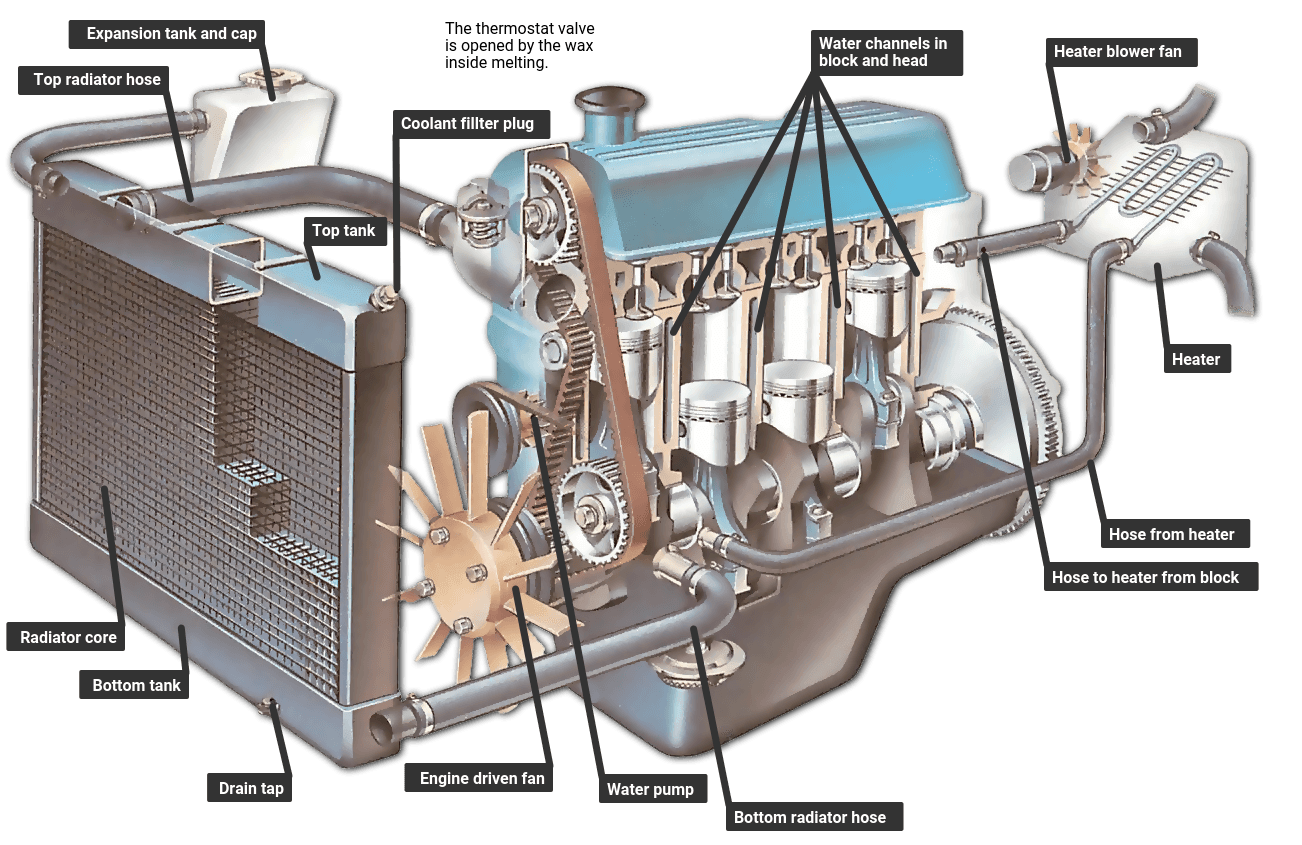How Does Engine Cooling Work in a Car?
An engine is the heart of a car. It converts fuel into power, which is then used to move the vehicle. However, engines can also produce a lot of heat, which can damage them if it’s not dissipated. This is where the cooling system comes in.
Components of an Engine Cooling System
The cooling system consists of several components, including:
- Water pump: The water pump circulates coolant through the engine and radiator.
- Radiator: The radiator is a heat exchanger that transfers heat from the coolant to the atmosphere.
- Coolant: Coolant is a fluid that absorbs heat from the engine and transfers it to the radiator.
- Thermostat: The thermostat controls the flow of coolant through the radiator.
- Fan: The fan helps to draw air through the radiator, which helps to cool the coolant.
How the Cooling System Works
The cooling system works by circulating coolant through the engine and radiator. The water pump draws coolant from the radiator and pumps it through the engine. As the coolant flows through the engine, it absorbs heat from the engine. The coolant then flows back to the radiator, where it is cooled by the air that is drawn through the radiator by the fan. The cooled coolant then flows back to the engine, and the cycle repeats.
The thermostat controls the flow of coolant through the radiator. When the engine is cold, the thermostat is closed, which prevents coolant from flowing through the radiator. This allows the engine to warm up quickly. As the engine warms up, the thermostat opens, which allows coolant to flow through the radiator. This helps to keep the engine cool.
Importance of Engine Cooling
The cooling system is essential for the proper functioning of an engine. If the cooling system fails, the engine can overheat, which can cause serious damage. Overheating can lead to warped cylinder heads, blown head gaskets, and even seized pistons.
Maintaining the Cooling System
The cooling system should be checked and maintained regularly to ensure that it is functioning properly. The coolant should be flushed and replaced every 30,000 to 50,000 miles. The water pump, thermostat, and fan should also be inspected定期ly.
By following these tips, you can help to ensure that your engine cooling system is functioning properly and that your engine is protected from overheating.





